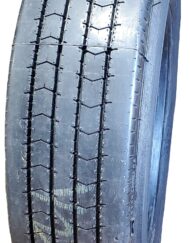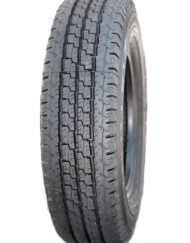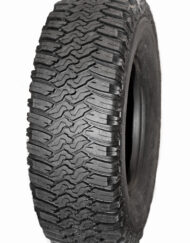Fact Or Fiction: 7 Retread Misconceptions
In 2015, tire production reached record levels in the US. Almost 84% of the $46.8 billion in tire sales were American made tires. With commercial truck tire retread use growing about 20% since 2009, the recapped tire industry is here to stay. For those in the market for a new set of tires, it’s important to know what is fact or fiction about retread tires.
1. The rubber strips seen on roadways are from retreads. FICTION
Those rubber strips that peel off truck tires, and end up an eyesore on the side of the road or driving hazard in a traffic lane, come from new tires and retreads, alike. Studies by Federal and State agencies have determined that truck tire failure is most often caused by improper inflation and overloading truck tire weight capacity rather than tire type.
2. There are no standards to regulate consistent quality standards of retreads. FICTION
All passenger, 4×4 and light truck tires bear a code number on sidewalls that indicate the time and place of retread. The truck tire industry is self-regulating with regard to retreads. Standards are implemented that consistently result in high quality retreads. For this reason, the US Department of Transportation has not found it necessary to develop federal regulations regarding retreads. As technology and manufacturing methods have improved, so have the quality of retreads.
3. Retread tires are not as safe as new tires. FICTION
The US Department of Transportation routinely studies all motor vehicle accidents. Of tire related accidents, data reflects that retreads are as safe as new tires. The most common reasons for a tire-related accident are improperly maintained tires that are underinflated or tires lacking sufficient tread for proper handling on the road.
4. Retread tires are not very popular. FICTION
Companies with a large fleet of vehicles routinely use retreads. Many federal and state agencies mandate the use of retreads on government vehicles. Retread tires are commonly used on emergency responder vehicles, such as ambulances and fire trucks. Many commercial aircraft feature retreads. Our most precious cargo is often transported daily on retreads featured on school buses.
5. Retread tires cannot match new tires when it comes to performance. FICTION
Retread tires are manufactured for use at the same legal speeds as a new tire. Drivers and passengers cannot distinguish any difference in comfort when comparing a ride at same speeds with similar new tires or retreads.
6. Retread tires look like used tires. FICTION
In blind consumer studies, truck drivers were not able to determine which tire was featured, new or retreads. Appearance may vary between retread manufacturers. Just as a consumer takes the time to shop around for the best deal on new tires, shop around for retreads. Find a quality retread manufacturer that produces a safe, high quality retread that also has that new tire shine you are looking for.
7. Retreads are not really a green product. FICTION
Although use of the “green” label for retreads has been controversial among environmentalists, the final word, based on in-depth studies, makes it definitive. Of all recycled products available, retread tires are actually the greenest.
Each retread on the road means one less tire destined for a landfill.
A new truck tire requires 22 gallons of oil for production. A retread requires about 7 gallons.
Every retread on the road contributes to the conservation of natural rubber resources.
As an American made product, a much smaller carbon footprint is created as compared to a low-cost, new tire import.
The tire retread industry is here to stay. It is also growing. Drivers have more options now for virtually every type of vehicle. Whatever a consumer’s priorities are for determining a purchase, a retread can satisfy that priority. If sustainability is important to you, a retread has that covered. Looking for a high-quality tire that is affordable? Try a retread. Simply want a flashy set of tires that look good on your dream car? Retread instead.




